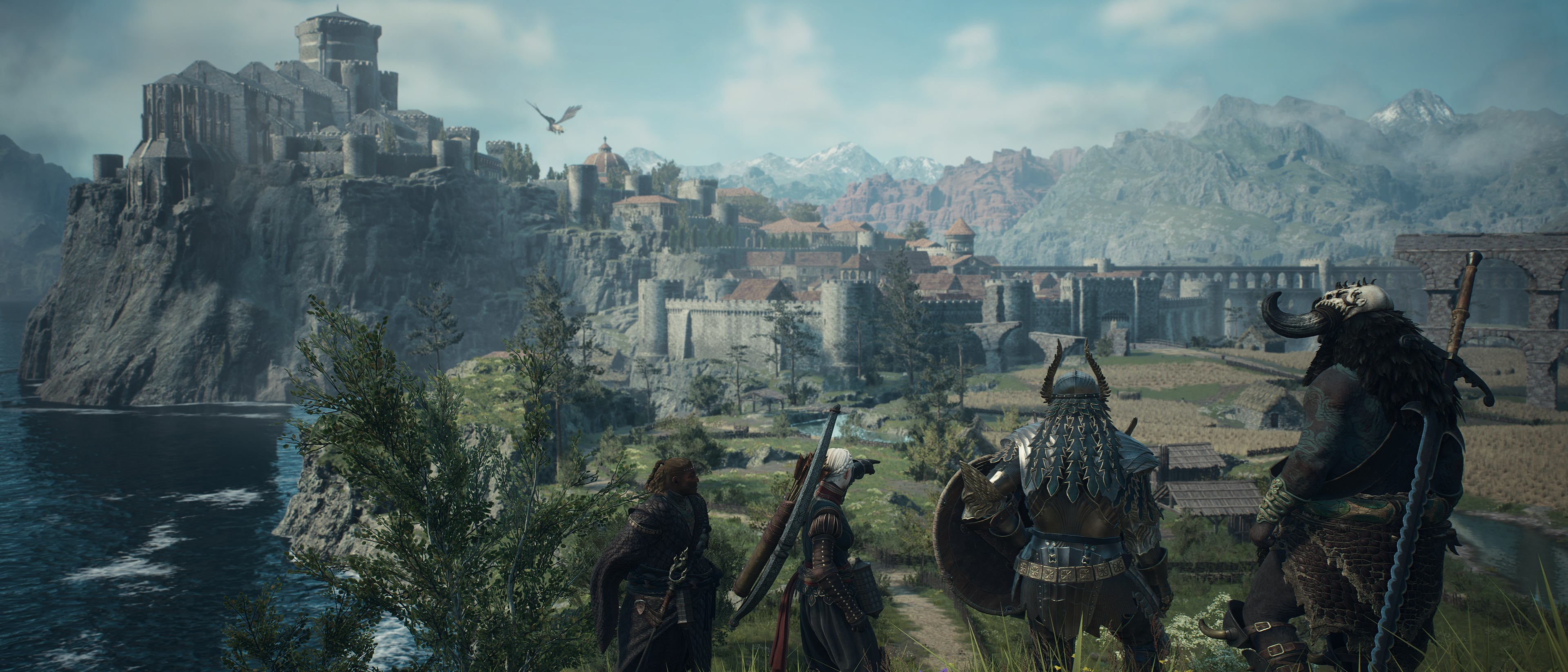TechRadar Verdict
Dragon’s Dogma 2 leverages emergent gameplay to put forward an action-adventure that’s challenging, thrilling, and constantly unpredictable. Rich in well-thought-out systems and mechanics that feed into one another seamlessly, it’s a game that sinks its claws into you and doesn’t let go.
Pros
- +
Visually breathtaking open world that’s rewarding to explore
- +
Varied classes all offer something fun and unique
- +
Pawn system enriches the experience in innovative and surprising ways
Cons
- -
Uncapped framerate leads to spotty console performance
- -
Some infuriating enemy types can lead to untimely deaths
Why you can trust TechRadar
Platform reviewed: PS5
Available on: PS5, Xbox Series X|S, PC
Release date: March 22, 2024
There was one particular journey in my time with Dragon’s Dogma 2, Capcom’s long-awaited sequel in the action role-playing game (RPG) series, that left an indelible mark on me. I found myself faced with a long trek through the arid canyons of the kingdom of Battahl.
Scanning for potential shortcuts, I came across a lever-operated cart - suspended in the air by a ropeway - that could safely and quickly carry me to my destination. Or so I thought. As I reached the halfway point of the trip, a griffin swooped in and instantly destroyed the cart, sending me and my party of AI-controlled companions plummeting to the cragged floor below, killing us all instantly.
I bring this up not to declare that Dragon’s Dogma 2 is too difficult or unfair - even if that particular moment did leave me in a state of flabbergasted disbelief. Instead, this is just one of many anecdotes that formed during my time with Dragon’s Dogma 2 that demonstrate just how dynamic and unpredictable the game’s world can be.
And it’s not all hilarious woes such as my demise at the hand of a bird the size of a house. Dragon’s Dogma 2’s open world is full to the brim with quests, dangers, treasures, and secrets of all kinds. If you’re willing to acknowledge the game’s near-complete lack of hand-holding, then what awaits you here is one of the most compelling action RPG experiences since the series’ 2012 original.
Rise up
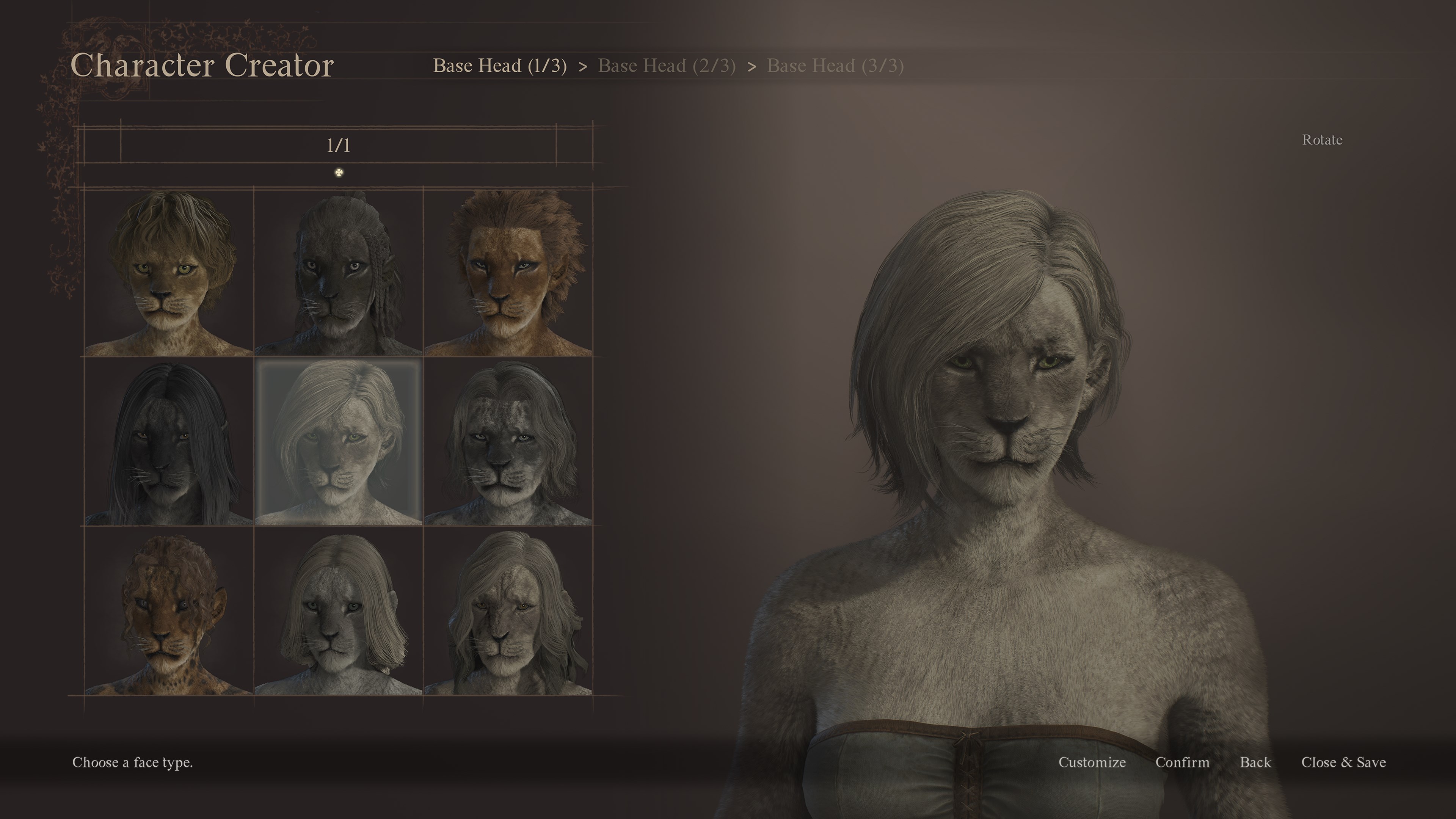
As was the case in that original game, Dragon’s Dogma 2 places you in the well-trodden boots of the Arisen - a character who has been chosen by the titular Dragon to best it in combat in order to free the world from its endless cycle of conflict between it and society’s various factions.
But getting there is much easier said than done, and you may find one of your biggest challenges right at the start in the initial character creation process. Dragon’s Dogma 2’s character creator is easily one of the best and most in-depth ever made. You’ll find all manner of sliders for tweaking your face and body, as well as a litany of hairstyles, skin complexions, and muscle tones.
Creation goes much further than aesthetics, though. Your character’s height and weight can affect movement speed and how much you can carry by default. Dragon’s Dogma 2 also introduces the Beastren, a cat-like race that, should you choose to be one, can drastically alter your options during quests and affects how some NPCs can interact with you.
Pawnshop
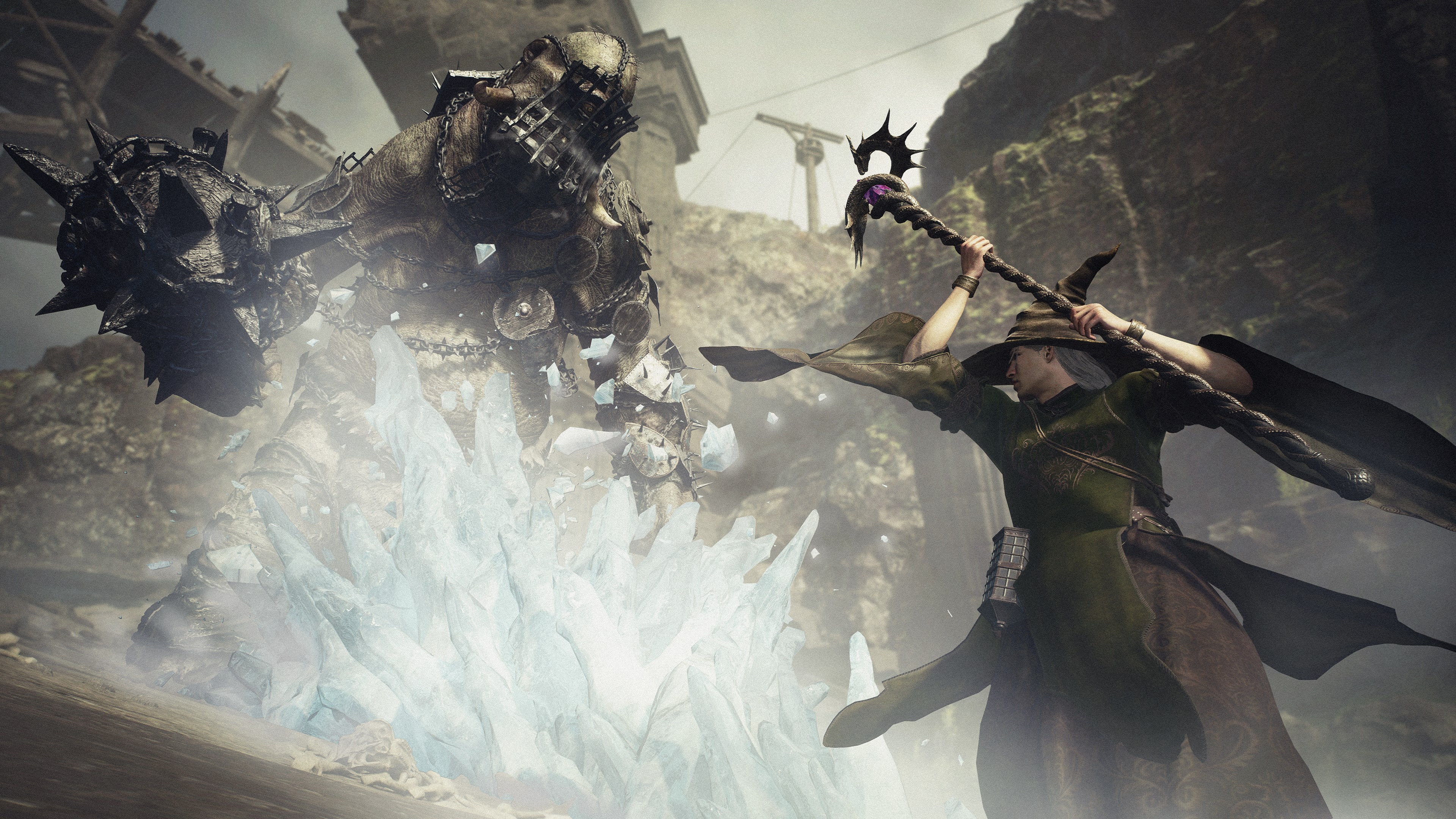
This level of depth is consistent across most of Dragon’s Dogma 2’s systems. As Arisen, you have command over a party of AI-controlled Pawns, which aid you in battle as well as exploration. You’ll have a Main Pawn, which you’ll also get to create, as well as up to two support Pawns that have been created by other players.
For the most part, by default, entries in your quest log will only give the bare minimum of information.
What’s genius about the Pawn system is that it’s all based on their knowledge and experience in others’ playthroughs. If a Pawn has discovered a cave or treasure chest in another player’s game, for example, they can then tell you about it when recruited. The same goes for quest completion and enemy encounters; if a Pawn has undergone a quest before, they can help guide you through it when inhabiting your own party.
Often, having that guidance is crucial in the world of Dragon’s Dogma 2. For the most part, by default, entries in your quest log will only give the bare minimum of information. You’ll also be given no quest markers guiding you to a destination unless a Pawn has sufficient knowledge of it. And as support pawns don’t level up, you’ll benefit from turning them over throughout the game, dismissing and hiring new ones as you progress. It also helps that Pawns here are significantly smarter in the sequel, doing a better job of reacting to pressing matters during combat and exploration.
This isn’t to say they’re entirely perfect, mind. When fighting enemies, Pawns often seem completely averse to getting out of the way of enemy attacks. This is especially true when facing harpies - flying enemies that can pick up party members in their talons and drop them back down, often off the edge of a cliff. This ended up being the primary way my Pawns died in Dragon’s Dogma 2, and it was always infuriating. Thankfully, riftstones - large stones you can hire new Pawns from - are plentiful, dotted around the open world just enough that replenishing your ranks is never a problem.
Stay-at-home vocation
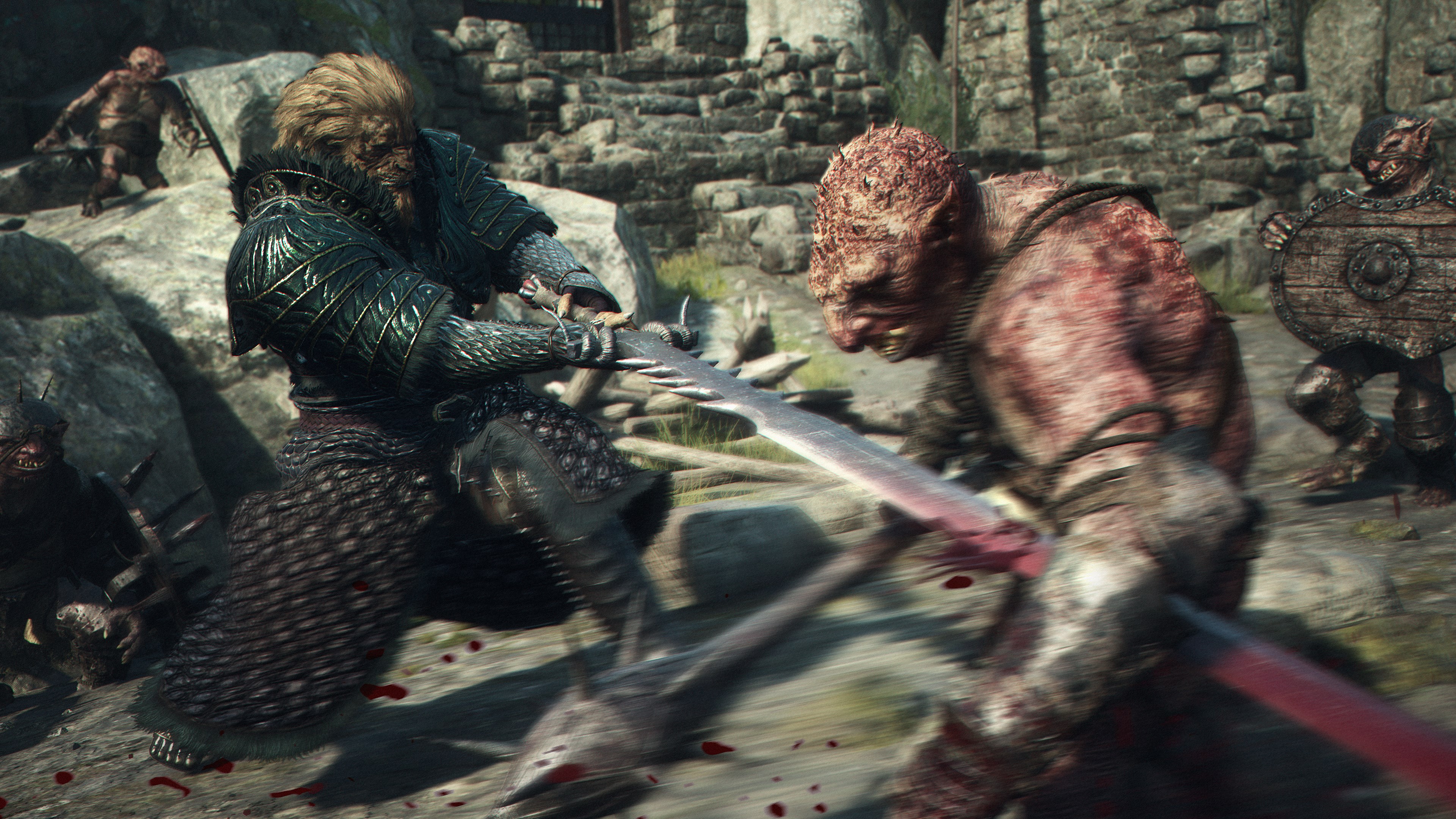
Pawns are undoubtedly incredibly useful, then, but if they’re the homemade ciabatta roll that gives foundation to the party, it’s you - the Arisen and your chosen vocation (read: class) that forms the delicious filling. Your vocation will dictate how you approach combat in Dragon’s Dogma 2, as well as which armor and weapons you can equip.
The game starts you out with a choice of four basic vocations: Fighter, Thief, Archer, and Mage. They’re all more or less self-explanatory. The Fighter equips a sword and shield and acts as the bulwark, protecting the party from harm while providing some support. Thieves are swift-but-fragile damage dealers, Archers control battlefields from a distance, and Mages can charge up powerful spells and offer healing aids.
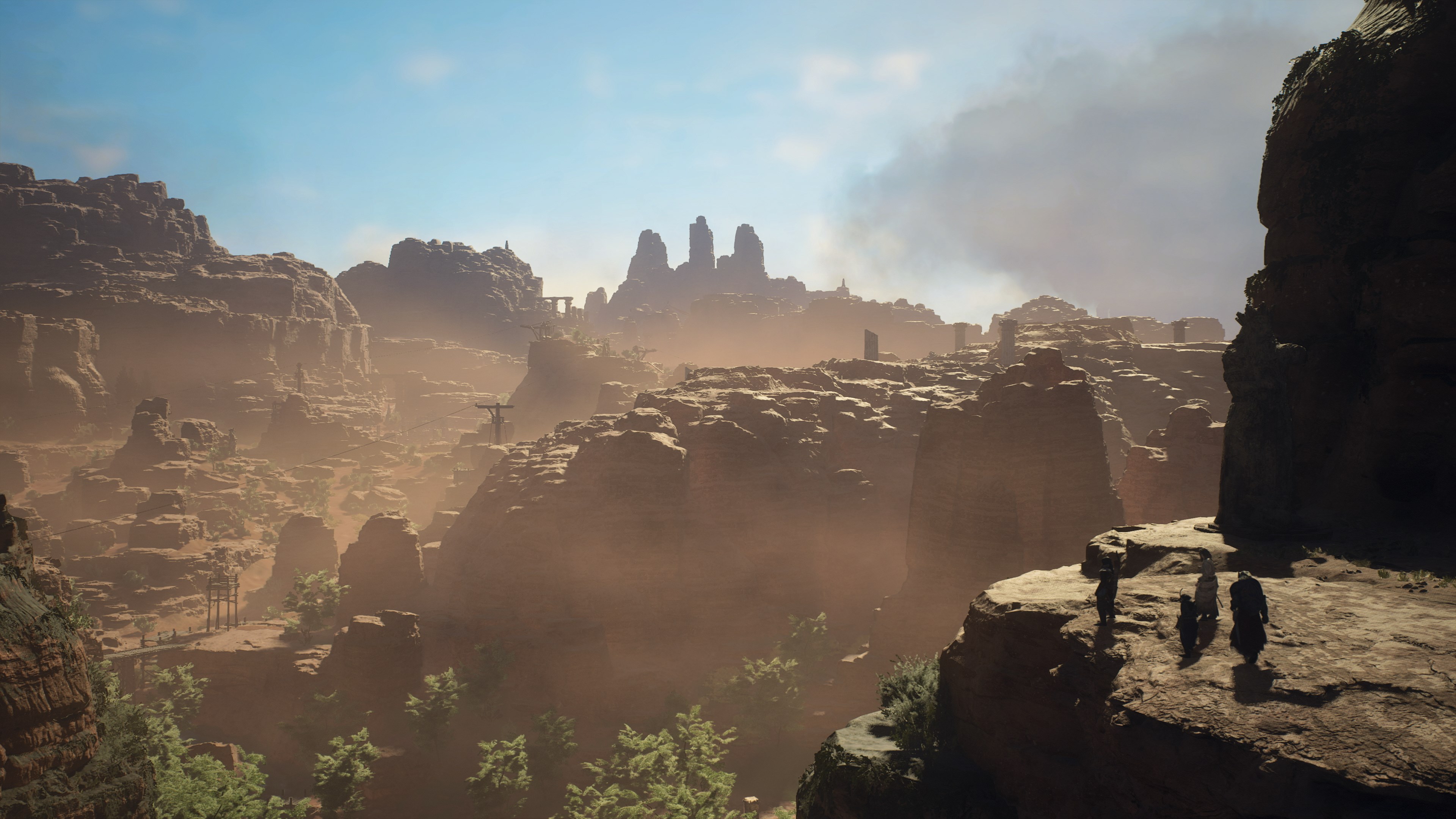
The unpredictability of Dragon’s Dogma 2’s vast open world is simply exhilarating. Whether it’s stumbling across a cave that escaped your eye before, or dealing with a sudden griffin attack that appears out of nowhere, there’s rarely such a thing as a straightforward trip between destinations.
You’ll eventually unlock more vocations to try out as you progress or fulfill certain quests. New to Dragon’s Dogma 2 is the Mystic Spearhand, which in my preview last month, was described to me by Capcom as “the Devil May Cry class.” It has a versatile projectile that can slow or stun enemies, as well as allow you to instantly teleport to those enemies it hits, then lets you follow up with damage-dealing combos and counters. It’s fantastic fun, but its complete lack of a dodge or meaningful evasive abilities makes it a tough one to master.
Then there’s the Trickster, another new vocation that’s largely unable to deal damage at all. What use is that? Well, instead of going on the offensive, the Trickster employs abilities that can confuse enemies or turn them against each other. The confusion you sow in the enemy’s ranks - such as conjuring fake platforms over cliff edges or possessing foes to fight their friends - allows the rest of your party to take advantage of the chaos. While tough to get to grips with, Trickster became my new favorite vocation for its unorthodox but highly effective nature.
The more you play a single vocation, the more it’ll increase in rank, thus unlocking new abilities and augments which can be purchased at vocation guilds. You’re not locked to one vocation throughout the game, and you can freely switch at these guilds if you fancy a change. Dragon’s Dogma 2 highly encourages ranking up all vocations, too, as the unlockable augments of each can be equipped by any of them.
Giant killer
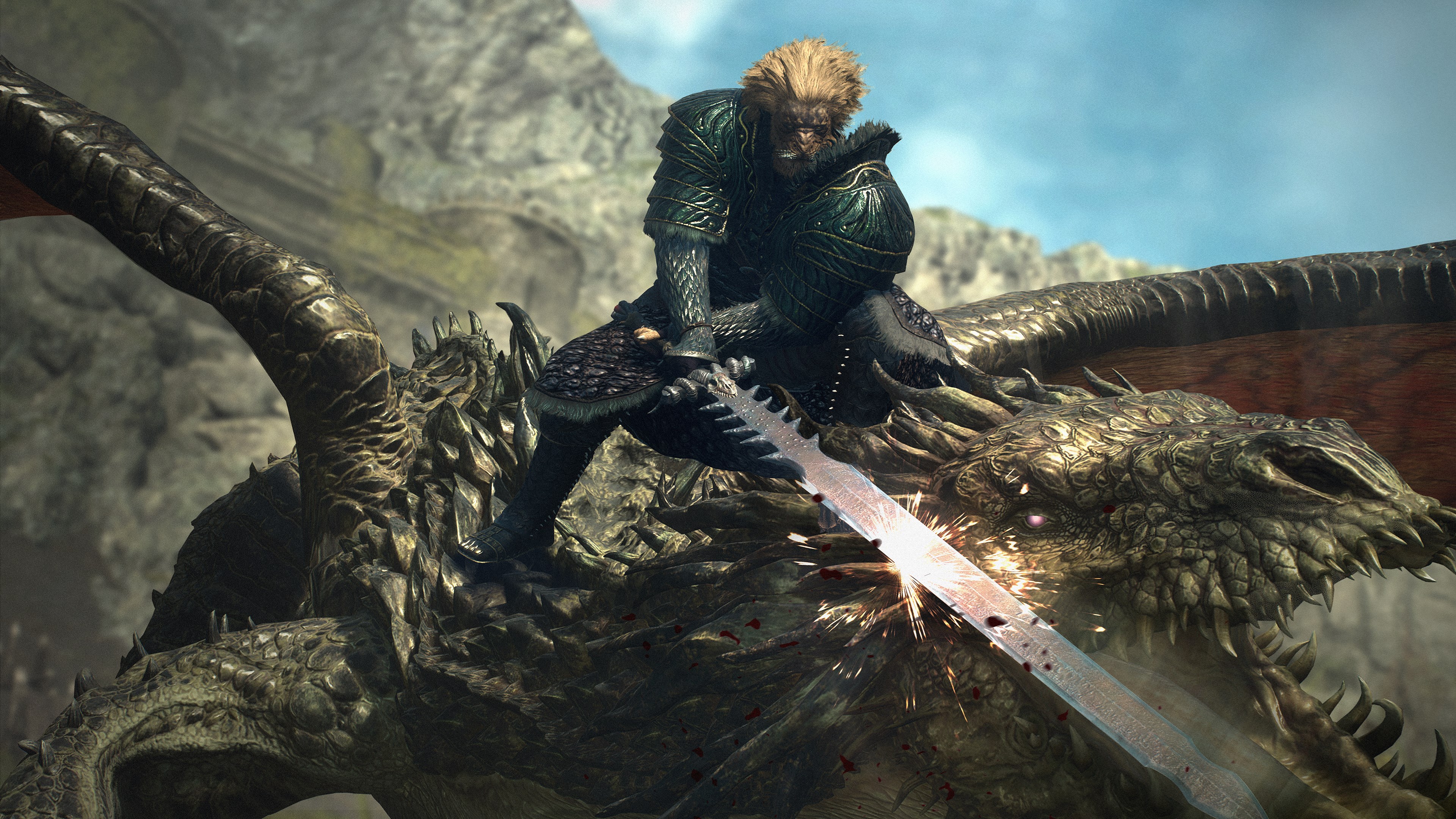
Combat is utterly fantastic in Dragon’s Dogma 2, which is a blessing as you’ll be doing a lot of it. Encounters are more frequent than they ever were in the original game, so much so that you’re likely to fight enemies around every other corner. This lends exploration in the game a high degree of danger and challenge, especially when you dare to stray from the beaten path.
Basic enemies like goblins, bandits, harpies, and the amphibious saurians are all diverse and have structured chains of command. For example, there’s a venomous variant of the harpy that - unlike the basic type - is resistant to fire and can tear through your party if you’re ill-prepared. Meanwhile, hobgoblins are much beefier than the spindly regular mobs, and can easily knock you out with strong blunt strikes.
Once again, however, it’s the larger beasts that steal the show. Some, like chimeras, minotaurs, and cyclopes, have predefined habitats and usually show up in the same places. Much more dangerous are beasts like griffins and ogres that are unpredictable and roam the map at their leisure. Many times I witnessed an ogre dropkick me from off-screen or had a griffin instantly destroy an oxcart I was traveling in. But it’s moments like these that, once again, help Dragon’s Dogma 2’s open world feel dynamic, emergent, and constantly thrilling.
What a wonderful world
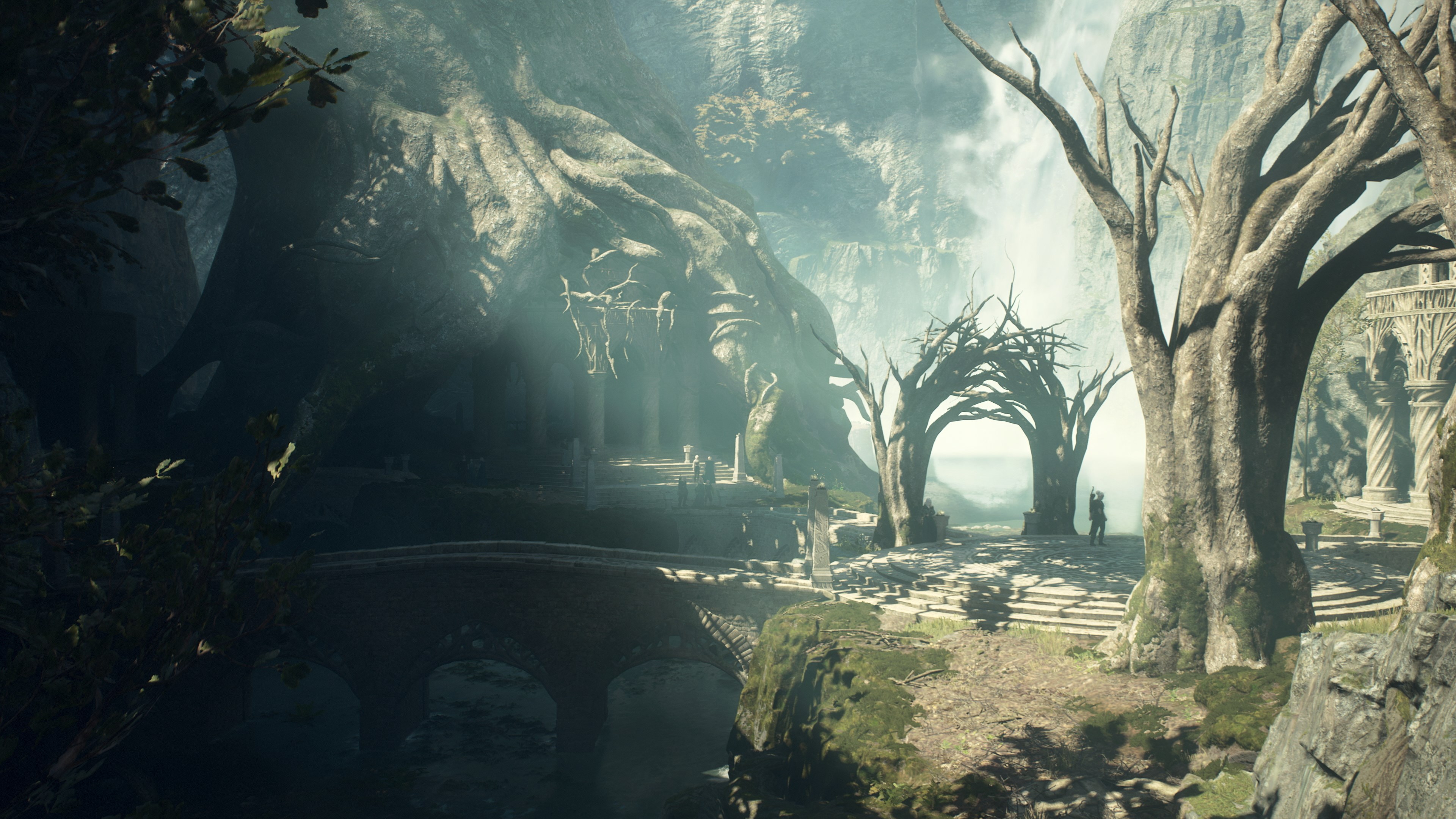
This open world is absolutely massive and utterly breathtaking to behold. You’ll rarely go five minutes without stumbling across a captivating vista, or an enticing new path you’ve yet to explore. And the best part is that because there’s very little in the way of guidance or limitation (you can go pretty much anywhere right from the get-go), each new discovery feels earned.
Don’t expect to blitz through Dragon’s Dogma 2’s open world, however, as options for fast travel are limited. Doing so requires you to place a Portcrystal (an item that acts as a fast travel destination) and use a Ferrystone (a somewhat rare consumable item that’s used upon travel).
Herein lies another layer of depth; the convenience of fast travel comes at a cost, thus incentivizing you to travel by foot instead. The benefits of this are clear, though; that’s more time you get to explore this gorgeous world and uncover secrets you simply wouldn’t have seen or known about by using fast travel.
Alternatively, you can pay for an oxcart to ferry you to major settlements - but you’ll still be at risk of being ambushed by all manner of creatures. Better still, enterprising players can ride the back of a griffin and be swept off to parts unknown. Faster travel options exist, then, but, as the saying goes, there’s no such thing as a free lunch.
Overall, Dragon’s Dogma 2 is one of the most ambitious games Capcom has ever made. Its myriad systems weave together effortlessly, and its exploration proves so bountiful, that it makes for a game that’s fiendishly difficult to put down. Even after I’d rolled credits, it’s not a world I was eager to leave.
Accessibility
Unfortunately, there’s little in the way of dedicated accessibility options in Dragon’s Dogma 2, beyond the option to toggle subtitles and their background opacity (though even this is a basic binary option). This is a shame, as other Capcom titles like Resident Evil 4 and especially Street Fighter 6 feature plenty of accessibility options to suit players of all kinds, so it’s not as if Capcom has no experience in this department. Hopefully, more accessibility options can be introduced via post-launch support.
Should I play Dragon's Dogma 2?
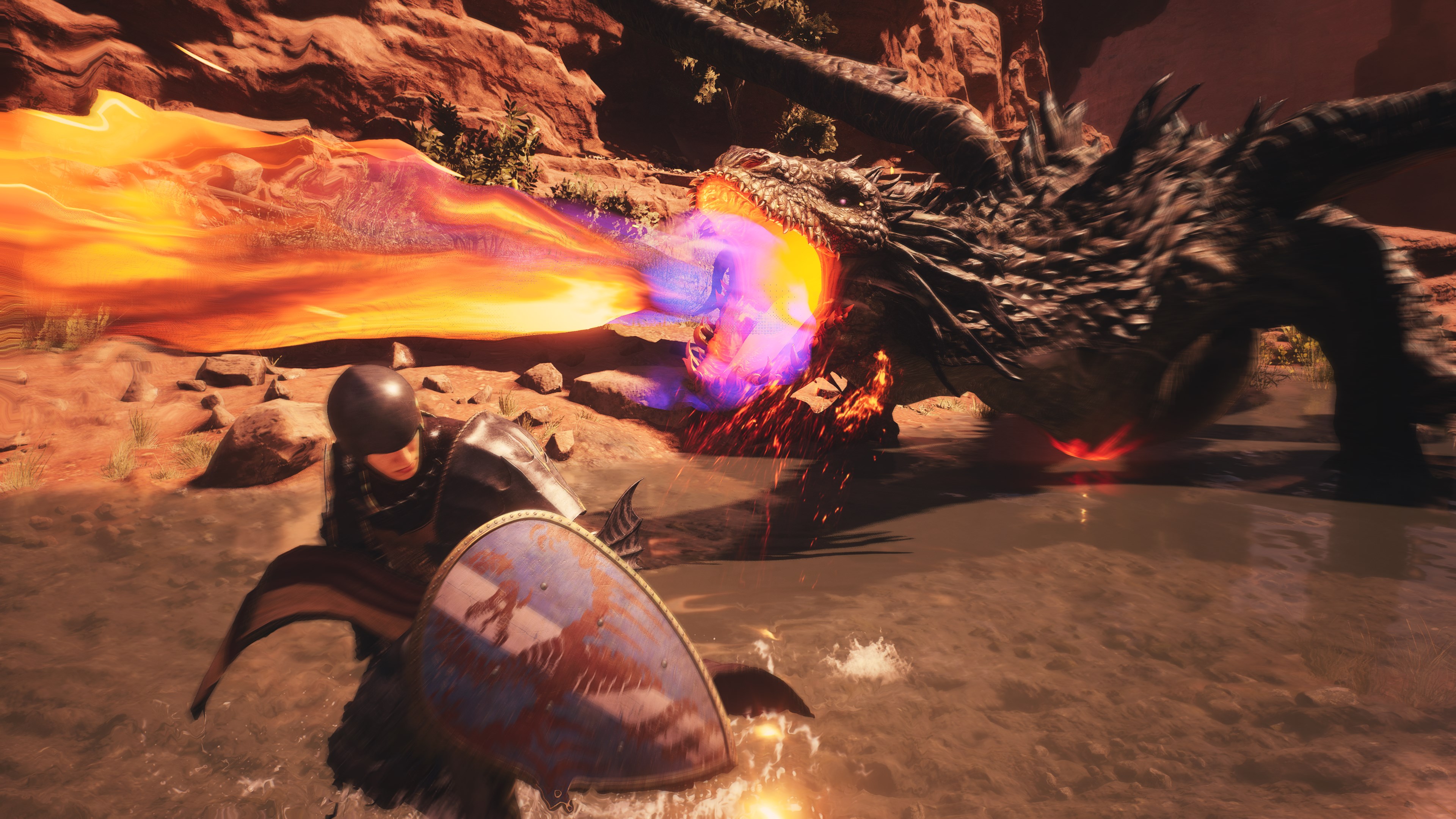
Play it if...
You want to explore a truly surprising open world
Dragon’s Dogma 2’s open world rejects the trite checkbox design of many other AAA efforts, instead trusting you to explore and uncover its secrets at your discretion.
You love slick and challenging combat
With its varied vocations and dangerous foes, Dragon’s Dogma 2 has combat that’ll consistently have you at the edge of your seat.
Don't play it if...
You don’t like the idea of being hopelessly lost
A lack of guaranteed quest markers, punishing combat and pitch-black nights make it all very easy to lose your way in Dragon’s Dogma 2. It’s all part of the experience, though we recognize that this may not be for everyone.
You prize consistent performance
Dragon’s Dogma 2’s uncapped framerate (on console) makes for an inconsistent experience in terms of performance. Hopefully, Capcom can introduce a dedicated 30fps mode post-launch for more stable play.
How we tested Dragon's Dogma 2
Capcom provided a review code for the PlayStation 5 version of Dragon’s Dogma 2, and it took me roughly 60 hours to finish the game. This entailed a mixture of completing main and side quests, ranking up vocations, exploring the world for better equipment and loot, and taking on extremely powerful foes like drakes, lesser dragons, dullahans, and more. I should note that your own playtime may vary, as I hadn’t even gotten close to exploring absolutely everything the game has to offer in those 60 hours.

Rhys is TRG's Hardware Editor, and has been part of the TechRadar team for more than two years. Particularly passionate about high-quality third-party controllers and headsets, as well as the latest and greatest in fight sticks and VR, Rhys strives to provide easy-to-read, informative coverage on gaming hardware of all kinds. As for the games themselves, Rhys is especially keen on fighting and racing games, as well as soulslikes and RPGs.
